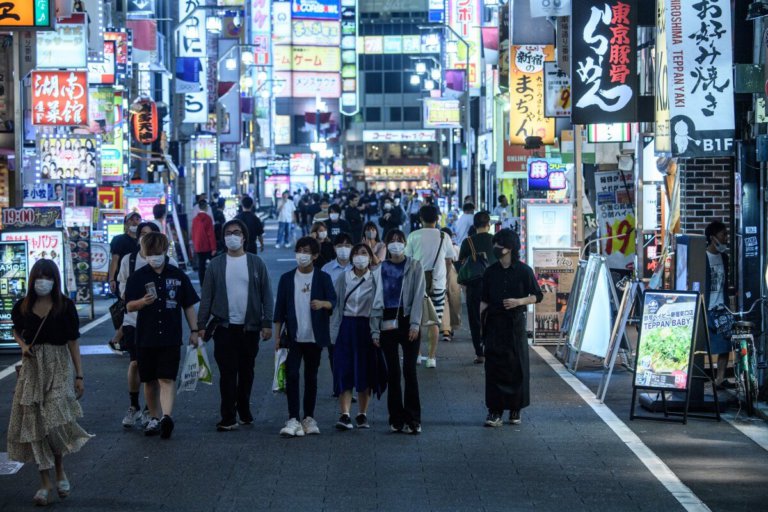
If you’re considering studying in Japan, pick up a few tips from the Japanese television series “Terrace House”.
This unscripted reality TV show takes place in a shared home with cameras in every corner. The first iteration dates back to 2012, offering viewers an intimate, behind-the-scenes look at life in different locations across Japan.
View this post on Instagram
For instance, in the “Terrace House: Opening New Doors” season, six young strangers enjoy an insta-worthy house in Karuizawa, a town based in the Nagano prefecture of Japan.
And in “Terrace House: Boys & Girls in the City” season, you’ll hop through Tokyo’s best entertainment hotspots and landmarks through the eyes of the participants. It’s nothing like American reality TV, which can be too flashy at times. Instead, get set for a soothing, minimalist ride ahead — beware though, it still packs its very own brand of punches.
Plus, every season brings new housemates and houses, which means there’s always something for you to tune into and someone to learn from before jumping into your study experience in Japan!
You find out about part-time jobs
While they live and study in “Terrace House,” many housemates find part-time jobs to pass time and make money.
In “Terrace House: Tokyo 2019–2020”, occupant Nishinoiri Ruka longs to be a real-life Spiderman.
His fellow housemates tease him about his job aspirations and push him to get acting classes while pursuing this fantasy.
Yet to his housemates’ surprise, Nishinoiri took his career one step further and found a part-time hospitality role at a nearby comics-themed bar true to his superhero passion.
Pro tip: International students in Japan can apply for a part-time work permit at any of the main airports of Japan. If you have just arrived in the country with a student visa, you will need to get a stamp to prove your part-time eligibility at the immigration office. International students may work no more than 28 hours per week.
You’ll never get bored
View this post on Instagram
From the Hot Springs in Kagoshimato to Japan’s Obon Festival in August, there’s never a shortage of things to see while you’re studying abroad.
One of the most common activities in the “Terrace House” franchise is to go and watch fireworks festivals in Japan.
Summer fireworks are called “hanabi”. “Hana” means flower and “bi” means fire, so the word roughly translates to “fire flowers” or “flower-shaped fire”.
And as “Terrace House” is often filmed over the summer, you’ll see many of the male and female occupants pick out their favourite yukata (summer kimono) to wear to the fireworks.
If you want to try one on while you’re studying there, a hanabi or a summer festival is the perfect time to show it off!
You’ll learn Japanese customs
View this post on Instagram
There are many Japanese customs to learn while you’re studying overseas, some you’ll pick up from watching “Terrace House”.
For one, it’s respectful to take off your shoes before entering the house so that you keep the living environment clean. There are even toilet slippers for the bathroom for extra cleanliness.
If you flout these practices, prepare for a few awkward stares or remarks.
When new housemates arrive at the house, they always bring a gift to share with others that evening.
The gift should also be wrapped in the most elaborate way possible, so the bigger the ribbon, the better.
You’ll see food, food and more food!
View this post on Instagram
Most of the “Terrace House” conversations take place around the dinner table. Get ready for the hunger pang as there will be plenty of local, delicious dishes shown on the series
From “omarisu” (rice omelette) to sashimi (raw fish), and okonomiyaki (a cabbage pancake with mayo) to juicy yellow watermelons, food is a big thing at the “Terrace House”. There are even food blogs dedicated to the dishes you’ll see on the show.
In fact, some viewers watch “Terrace House” just to get their quick fix of mouth-watering Japanese recipes.
And one common word you’ll take with you from the show is “kanpai!” which means “cheers!”
You’ll realise that anything is possible
View this post on Instagram
Did you hear about Peppe Durato Giuseppe from “Terrace House: Tokyo 2019–2020”?
The aspiring artist moved from Italy to Japan in hopes of becoming a successful comic writer and perfecting his manga skills.
He then scored himself a new manga series in the “Weekly Big Comic Spirits” magazine titled “Mingo” about an Italian guy coming to Japan and finding love.
Throughout the TV show, you will see him move from one professional victory to another as his artistry and popularity grows.
Eventually, Giuseppe’s work is framed on the front cover of the magazine and he is overwhelmed at how his entire journey has panned out.
Thus showing us all that anything is possible when you put your mind to it and chase your dream overseas!
Liked this? Then you’ll love…
4 facts about the world’s first ninja studies degree in Japan
‘I miss them’: Lonely or not, one Japanese student is resolved to continue studying in New York







